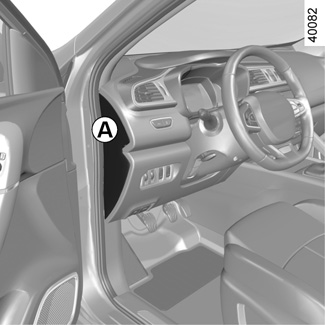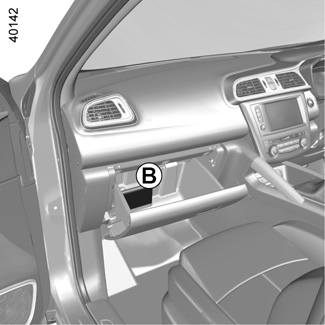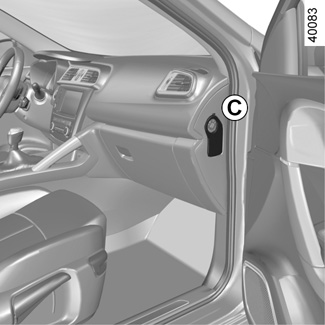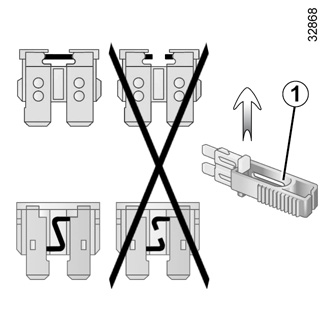FUSES


If any electrical component does not work, check the condition of the fuses.
Fuses in passenger compartment A or B on the left-hand side of the vehicle
Unclip the cover A using a screwdriver or similar.
Open the glovebox and unclip the flap B.

Fuses in passenger compartment C on the right-hand side of the vehicle
Unclip the cover C using a screwdriver or similar.
Use the fuse allocation label in the storage compartment A, B or C to identify the fuses.
Certain fuses should only be replaced by a qualified professional. These fuses are not listed on the label.
Only change the fuses represented on the label.
In accordance with local legislation or as a precautionary measure:
obtain an emergency kit containing a set of spare bulbs and fuses from an approved Dealer.
Check the fuse in question and replace it, if necessary, by a fuse of the same rating.
If a fuse is fitted where the rating is too high, it may cause the electrical circuit to overheat (risk of fire) in the event of an item of equipment using an excessive amount of current.

Clip 1
Remove the fuse using tweezers 1, located on the fuse plate.
To remove the fuse from the tweezers, slide the fuse to the side.
It is not advisable to use the free fuse locations.
Do not touch the wiring harnesses or the connectors.
Allocation of fuses
(the presence of certain fuses depends on the vehicle equipment level)
Symbol | Allocation | Symbol | Allocation | ||
|---|---|---|---|---|---|
D
| Indicators
|
| Steering column controls
| ||
ß
| Brake light | ñ
| Heated seats
| ||
| Audio amplifier
| C
| Heated rear screen
| ||
N
| Door locking/unlocking
|
| Electric door mirror
| ||
f
| Wipers
| ë
| Accessories sockets
| ||
Z
| Interior lighting, courtesy mirror, rain and light sensor, electric rear view mirrors, air conditioning, ECO mode
|
| Passenger compartment central unit, speed limiter/cruise control, diagnostics socket, electric windows, 4-wheel drive transmission (4WD)
| ||
î
| Radio, multifunction screen, multimedia sockets
|